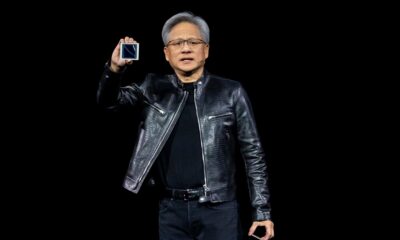TECHNOLOGY
Everything You Need to Know About Fog Computing

The rise of the IoT has brought with it a need for new computing paradigms that can support the large amounts of data generated by these devices.
One such paradigm is fog computing, which extends cloud computing capabilities to the edge of the network, closer to where data is generated and consumed. This article will explore what fog computing is, how it works, its benefits and challenges, and real-world examples of its use.
What is Fog Computing?
Fog computing is a distributed computing paradigm that brings computing resources closer to the edge of the network, reducing latency and improving the performance of internet of things (IoT) devices. In traditional cloud computing, data is generated by devices and transmitted to a remote data center or cloud for processing and storage. However, this approach can result in delays due to the distance between the device and the cloud, and the large amounts of data generated by IoT devices can also strain network bandwidth.
Fog computing addresses these challenges by extending cloud capabilities to the edge of the network, where data can be processed and analyzed closer to the source. This is achieved by deploying fog nodes, which are essentially mini data centers that can be located on the network edge or within the devices themselves. These fog nodes can perform data processing, storage, and analysis, as well as handle network management and security functions.
How Does Fog Computing Work?
Fog computing works by creating a distributed computing infrastructure that extends cloud capabilities to the edge of the network.
This infrastructure is made up of a network of fog nodes that can communicate with each other and with cloud data centers. Fog nodes can be located at the network edge, such as in an IoT gateway, or within devices themselves, such as a sensor or smart appliance.
When an IoT device generates data, it is transmitted to the nearest fog node for processing and analysis. The fog node can perform a range of functions, such as filtering, aggregation, and transformation of data, as well as running applications and services. The processed data can then be transmitted back to the device or sent to a cloud data center for further analysis and storage.
Benefits of Fog Computing
Fog computing offers several benefits over traditional cloud computing, including:

-
Reduced Latency: By processing data closer to the edge of the network, fog computing can significantly reduce the latency of data transmission, resulting in faster response times and improved performance of IoT devices.
-
Improved Security: Fog computing can improve security by enabling data to be processed and analyzed closer to the source, reducing the risk of sensitive data being transmitted over the network to a remote data center or cloud.
-
Scalability: The distributed nature of fog computing infrastructure allows for easy scalability and can support the growing number of IoT devices and the large amounts of data they generate.
-
Cost Savings: By reducing the need for data transmission to remote data centers or clouds, fog computing can reduce network bandwidth costs and lower operational expenses.
Applications of Fog Computing
Fog computing is being used in a variety of industries and applications, including:
-
Healthcare: Fog computing is being used in healthcare to support remote monitoring and telemedicine applications. In a hospital setting, for example, fog nodes can be deployed in patient rooms to collect and analyze vital signs, such as heart rate and blood pressure, and transmit the data to healthcare professionals for remote monitoring.
-
Industrial IoT: Fog computing is being used in industrial IoT applications to improve manufacturing efficiency, reduce downtime, and optimize supply chain management. In the oil and gas industry, for example, fog nodes have been deployed to collect and analyze data from sensors that monitor equipment performance and predict maintenance needs.
-
Smart Cities: Fog computing is being used in smart cities to support a range of applications, such as traffic management, public safety, and environmental monitoring. In Barcelona, for example, fog nodes have been deployed throughout the city to collect and analyze data from sensors that monitor air quality, noise pollution, and traffic congestion.
- Autonomous Vehicles: Fog computing is being used in autonomous vehicles to support real-time decision-making and reduce the reliance on cloud connectivity. Fog nodes can be deployed in vehicles to process sensor data and make real-time decisions, such as detecting obstacles or identifying pedestrians.
Challenges of Fog Computing
Despite its many benefits, fog computing also poses several challenges, including:
-
Security: The distributed nature of fog computing infrastructure can make it difficult to ensure the security of data and devices. Fog nodes can be vulnerable to cyberattacks, and there is a risk of data leakage or theft.
-
Interoperability: Fog computing requires the integration of multiple technologies and devices, which can pose interoperability challenges. Different devices may use different communication protocols or data formats, making it difficult to exchange data between them.
-
Complexity: The distributed nature of fog computing infrastructure can also make it more complex to manage and maintain. Fog nodes may require frequent updates and maintenance, and network management can become more challenging as the number of devices and nodes grows.
Future of Fog Computing
The future of fog computing looks bright, with many experts predicting that it will become an increasingly important computing paradigm in the years to come. Here are some of the key trends and developments that are likely to shape the future of fog computing:
-
Expansion of the IoT: As the number of IoT devices continues to grow, the demand for fog computing is likely to increase. Fog computing offers a way to process and analyze the large amounts of data generated by these devices, without requiring all the data to be transmitted to the cloud.
-
Integration with AI: Fog computing is well-suited for supporting AI applications, as it can provide the real-time processing and decision-making capabilities that are needed for many AI applications. As AI becomes more ubiquitous, we can expect to see greater integration of AI and fog computing.
-
Increased focus on security: Security is a major concern in the IoT, and fog computing offers several advantages over cloud computing in terms of security. As the importance of security in the IoT continues to grow, we can expect to see greater focus on security in fog computing.
-
Emergence of fog-to-fog communication: Fog computing is often viewed as a way to bridge the gap between cloud and edge computing, but it can also be used to enable communication between fog nodes. This could enable new applications and use cases that are not currently possible.
-
Standardization efforts: Standardization efforts are already underway for fog computing, with organizations such as the OpenFog Consortium working to define standards and best practices. As these efforts mature, we can expect to see greater adoption of fog computing in a wider range of industries and applications.
Fog computing is an emerging computing paradigm that offers several benefits over traditional cloud computing, including reduced latency, improved security, scalability, and cost savings. It is being used in a variety of industries and applications, and the future looks bright for this exciting technology. With the expansion of the IoT, integration with AI, increased focus on security, emergence of fog-to-fog communication, and standardization efforts, we can expect to see fog computing become an increasingly important computing paradigm in the years to come.
Conclusion
Fog computing is an emerging computing paradigm that offers several benefits over traditional cloud computing, including reduced latency, improved security, scalability, and cost savings. It is being used in a variety of industries and applications, including smart cities, industrial IoT, healthcare, and autonomous vehicles. However, fog computing also poses several challenges, including security, interoperability, and complexity, which must be addressed to ensure its widespread adoption. As the number of IoT devices continues to grow, fog computing is likely to become an increasingly important computing paradigm for supporting the large amounts of data generated by these devices.


















You must be logged in to post a comment Login